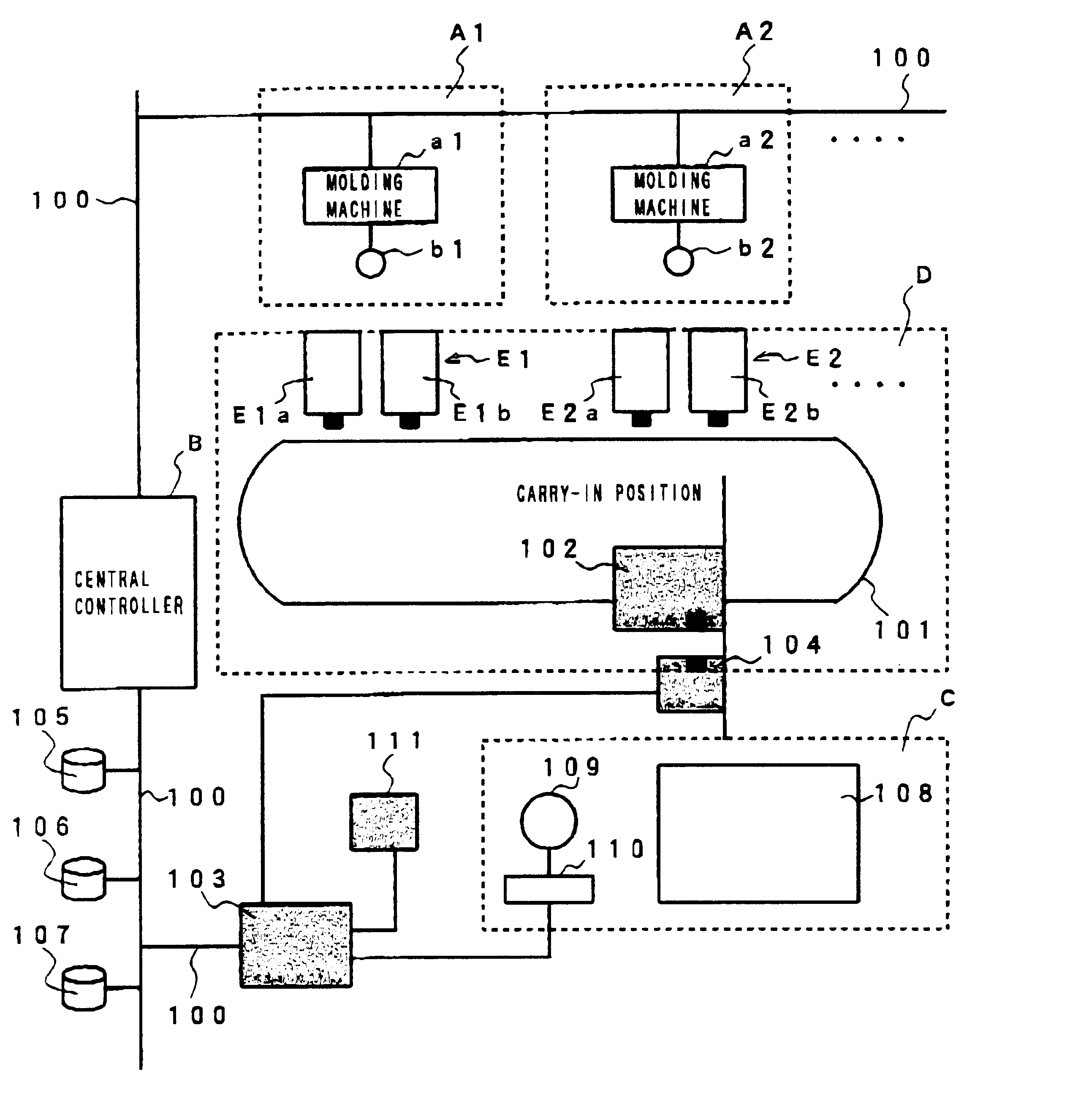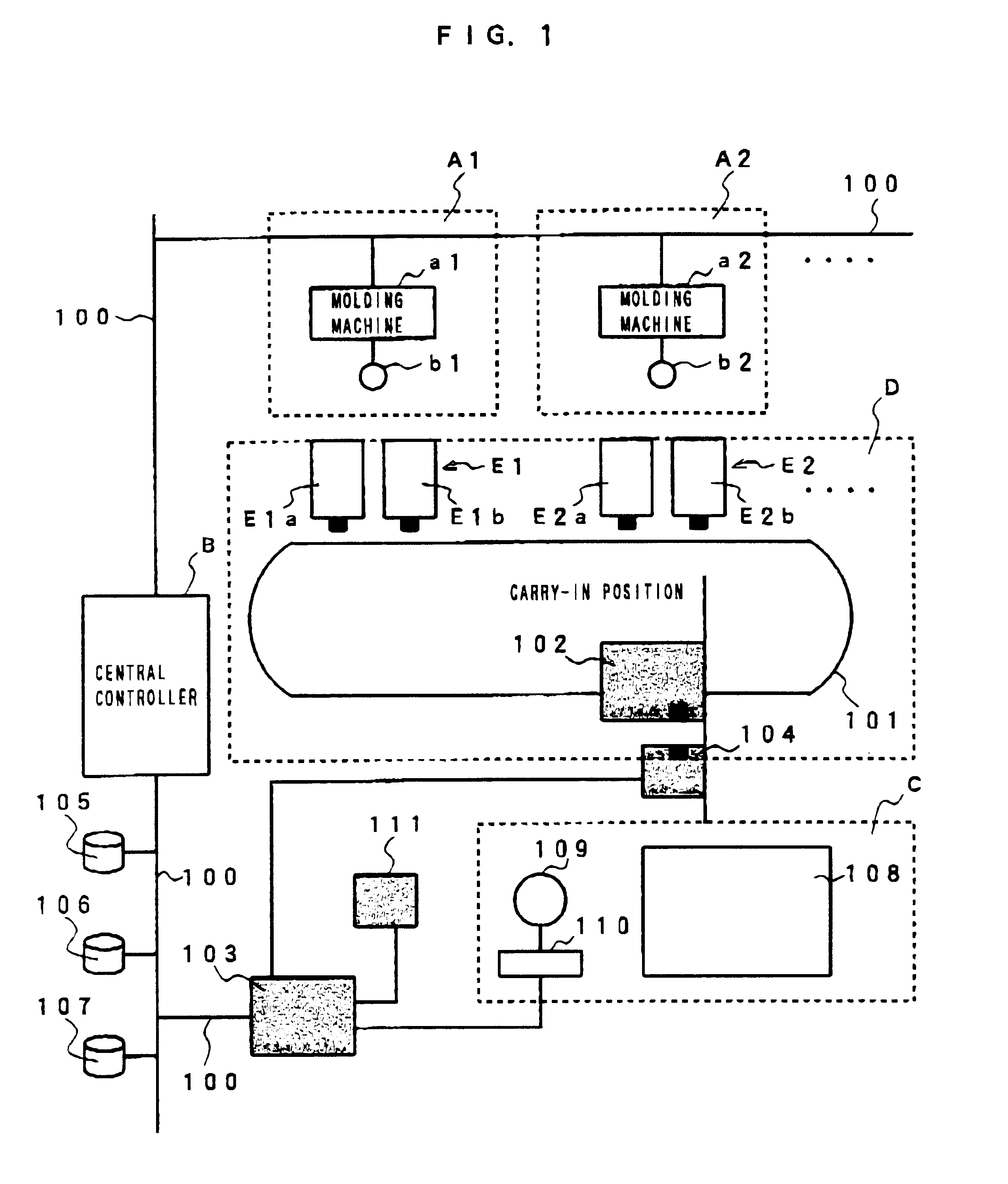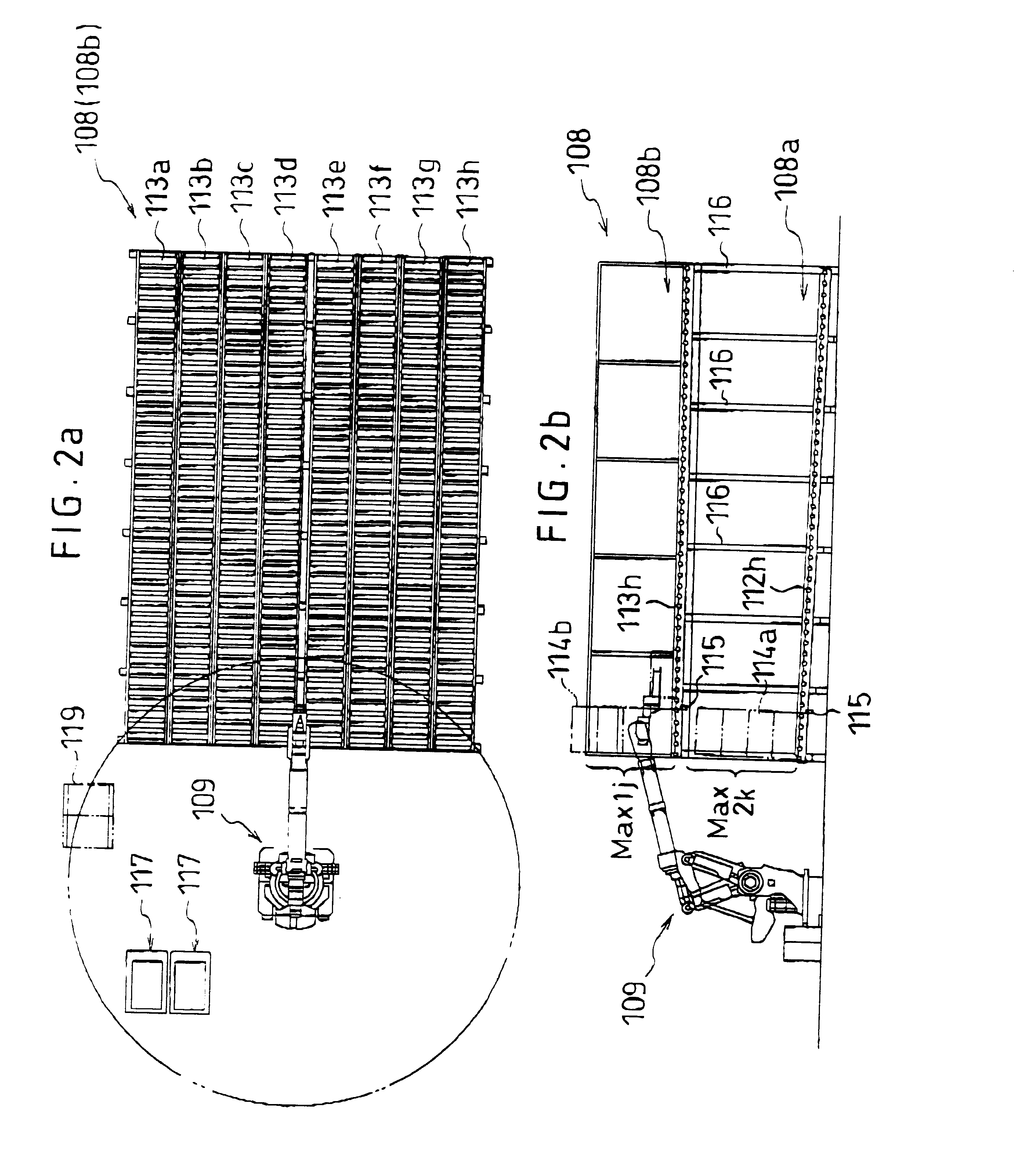Information transmitting system for use in factory
a technology of information transmission system and factory, applied in the field of information transmission system, can solve the problems of increased communication line, difficult to adapt, waste of memory
- Summary
- Abstract
- Description
- Claims
- Application Information
AI Technical Summary
Benefits of technology
Problems solved by technology
Method used
Image
Examples
Embodiment Construction
FIG. 1 schematically shows an arrangement of a factory employing an information transmitting system of the present invention, and in this embodiment, there is shown a stock cell to collect and store molded products produced by injection molding machines.
As shown in FIG. 1, this factory system comprises a plurality of molding cells Ai (where i=1,2, . . . max) and max is the maximum number of molding cells, arranged in an injection molding factory, a central controller B to control these molding cells, a stock cell C forming a robot warehouse, and a conveyance cell D to transfer molded products and pallets between the plurality of molding cells Ai in the injection molding factory and the stock cell C.
Among these components, each molding cell Ai comprises an injection molding machine ai(where i=1,2, . . . max), a controller for the injection molding machine (not shown), a handling robot bi (where 1,2, . . . max) serving as a pallet exchanging device for the injection molding machine ai...
PUM
| Property | Measurement | Unit |
|---|---|---|
| distance | aaaaa | aaaaa |
| transmission | aaaaa | aaaaa |
| access time | aaaaa | aaaaa |
Abstract
Description
Claims
Application Information
 Login to View More
Login to View More - R&D
- Intellectual Property
- Life Sciences
- Materials
- Tech Scout
- Unparalleled Data Quality
- Higher Quality Content
- 60% Fewer Hallucinations
Browse by: Latest US Patents, China's latest patents, Technical Efficacy Thesaurus, Application Domain, Technology Topic, Popular Technical Reports.
© 2025 PatSnap. All rights reserved.Legal|Privacy policy|Modern Slavery Act Transparency Statement|Sitemap|About US| Contact US: help@patsnap.com



